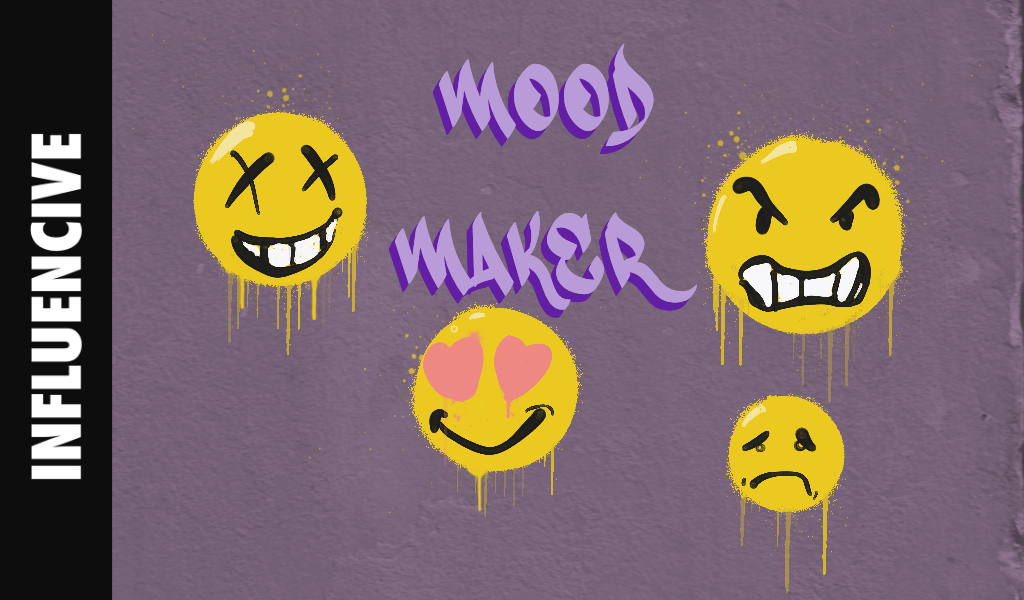Have you ever found yourself in a specific mood, pondering how it might look if you could depict it in any artistic style of your choosing?
With Mood Maker (a custom GPT-4 model), creating images of your moods is now possible. This “Emotional AI” helps people visualize their moods based on text input. Call it a mood artist – it’s more than just a conversation; it’s a mirror of your soul crafted in digital form.
Artificially Intelligent Human Sentiment
In the insanely complex realm of human interactions, deciphering emotions presents a significant challenge for machines. AI’s blossoming role in understanding and enhancing human emotions has led to the birth of Mood Maker, standing at the crossroads of technology and human psychology. The core of Mood Maker lies in its ChatGPT-4 foundation, which not only comprehends language nuances but also sculpts feelings into visual representations.
Mood Maker takes emotional AI to a new level by enabling dialog as a means to depict emotions. But how does it work? And what are the implications for industries that rely heavily on emotional impressions, such as marketing, mental health, and entertainment?
Understanding Mood Maker’s Functionality
Mood Maker’s operation is both complex and profoundly intuitive. When presented with a description of a feeling or an emotional state, it engages in a directed conversation to gather context, specifics, and any associated memories or imagery. It then processes this information through neural networks to synthesize a unique visual representation of the expressed mood.
Powered by OpenAI’s ChatGPT-4, Mood Maker benefits from vast improvements in AI’s ability to understand and respond contextually, considering a wide array of conversational inputs and previous interactions. The model’s sophisticated framework allows it to ‘see’ in image form, aligning more closely with the human cognitive process.
Exploring the Spectrum of Moods
The beauty of Mood Maker lies in its ability to capture the intricacies of human emotion, no matter the complexity. To illustrate its vast canvas, we’ll explore a series of moods and perceptions, uncovering the images that it generates on behalf of our inputs.
Joy
Prompt: I’m feeling happy today because it’s Spring, the weather is beautiful, my girlfriend is relaxing, and our dog is playing in the backyard (follow-up questions and answers not shown).
Art Style Selected: Impressionism
Image Generated:

Calm
Prompt: I am feeling calm today (base prompt only).
Art Style Selected: Scandinavian Minimalism
Image Generated:

Frustration
Prompt: My girlfriend is feeling frustrated because someone got a hold of her debit card information and used it to make several purchases, now she has to cancel the card. And this has happened several times (follow-up questions and answers not shown).
Art Style Selected: Abstract
Image Generated:

Sadness
Prompt: I am feeling sad today (base prompt only).
Art Style Selected: Film Noir
Image Generated:

Real-life Applications and Implications
The implications of Mood Maker’s emotional artistry could be far-reaching. In mental health, the technology could aid therapists in visualizing their patients’ feelings, offering a mirror to their struggles that verbal descriptions sometimes cannot convey. Similarly, the insights obtained from this visual output could revolutionize marketing by crafting campaigns that resonate with the nuanced emotions of their target audience.
The technology also raises ethical questions about privacy, consent, and the potential manipulation of emotions through AI output. These challenges must be navigated thoughtfully to ensure that AI remains a tool for good in the quest to understand and support human emotions.
User Experience and Feedback
Early users of Mood Maker have shared a wide array of experiences. Some express surprise and awe at Mood Maker’s ability to capture their emotional states, while others highlight the disconnect of a machine attempting to interpret something as deeply personal as mood. This user feedback serves not only as a testament to the complexity of human emotions but also as a guiding light for the future development of AI in this realm.
Conclusion
Mood Maker’s initial steps in translating conversations into images is only one facet of AI’s increasing role in emotional interpretation. It’s a spark of invention that raises the bar for future developments in AI, offering a glimpse into a world where technology and sentiment entwine in novel and profound ways. While the road ahead is laden with technical and ethical considerations, Mood Maker and other emotional AI projects stand as a testament to the inexhaustible human quest to bridge the gap between binary inputs and the human heart.
What do these visual interpretations make you feel? Are you captivated by the prospect of an AI capable of such emotional depth, or do you feel a twinge of skepticism? I’d like to invite you to explore Mood Maker and share your thoughts. After all, the conversation around AI’s emotional pulse is just beginning — and we each hold a piece of its canvas in our responses.
This is a Contributor Post. Opinions expressed here are opinions of the Contributor. Influencive does not endorse or review brands mentioned; does not and cannot investigate relationships with brands, products, and people mentioned and is up to the Contributor to disclose. Contributors, amongst other accounts and articles may be professional fee-based.

